 W
WCharles Whitworth, 1st Earl Whitworth, GCB, PC, known as The Lord Whitworth between 1800 and 1813 and as The Viscount Whitworth between 1813 and 1815, was a British diplomat and politician.
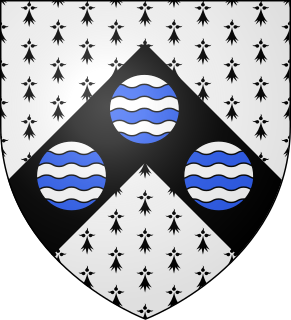 W
WBaron Brownlow, of Belton in the County of Lincoln, is a title in the Peerage of Great Britain. It was created in 1776 for Sir Brownlow Cust, 4th Baronet. The Cust family descends from Richard Cust (1622-1700) of The Black Friars, Stamford, who represented Lincolnshire and Stamford in Parliament. In 1677 he was created a baronet, "of Stamford in the County of Lincoln". He was succeeded by his grandson Richard Cust, 2nd Baronet, who married Anne Brownlow, daughter of Sir William Brownlow, 4th Baronet, "of Humby", Lincolnshire, and sister and sole heiress of John Brownlow, 1st Viscount Tyrconnel, 5th Baronet of Belton House, Lincolnshire. The 2nd Baronet's son Sir John Cust, 3rd Baronet, sat as a Member of Parliament for Grantham and served as Speaker of the House of Commons from 1761 to 1770 and in 1754 inherited the Brownlow estates, including Belton, on the death of his childless maternal uncle Viscount Tyrconnel. His son Brownlow Cust, 4th Baronet represented Ilchester, Somerset, and Grantham in Parliament and in 1776 was raised to the peerage as Baron Brownlow, "of Belton in the County of Lincoln", chiefly in recognition of his father's services. He was succeeded by his son John Cust, 2nd Baron Brownlow who had sat as a Member of Parliament for Clitheroe, Lancashire, and also served as Lord Lieutenant of Lincolnshire for many years. In 1815 he was created Viscount Alford, "in the County of Lincoln" and Earl Brownlow both in the Peerage of the United Kingdom. In 1810 the future 1st Earl had married Sophia Hume, a daughter of Sir Abraham Hume, 2nd Baronet, of Wormleybury, by his wife Lady Amelia Egerton, a great-granddaughter of John Egerton, 3rd Earl of Bridgewater.
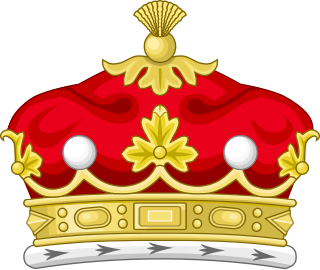 W
WMarquess of Anglesey is a title in the Peerage of the United Kingdom. It was created in 1815 for Henry Paget, 2nd Earl of Uxbridge, a hero of the Battle of Waterloo, second in command to the Duke of Wellington. The Marquess holds the subsidiary titles of Earl of Uxbridge, in the County of Middlesex, in the Peerage of Great Britain (1784), Baron Paget, de Beaudesert, in the Peerage of England (1553), and is also an Irish Baronet, of Plas Newydd in the County of Anglesey and of Mount Bagenall in the County of Louth.
 W
WEarl Beauchamp was a title in the Peerage of the United Kingdom. It was created in 1815 for William Lygon, 1st Baron Beauchamp, along with the subsidiary title Viscount Elmley, in the County of Worcester. He had already been created Baron Beauchamp of Powyke in the County of Worcester, in 1806, also in the Peerage of the United Kingdom. Lord Beauchamp had previously represented Worcestershire in the House of Commons. He was succeeded by his eldest son, the second Earl. He also sat as Member of Parliament for Worcestershire. He never married and was succeeded by his younger brother, the third Earl. In 1813 he assumed by Royal licence the surname of Pyndar in lieu of Lygon. On his death in 1853 the titles passed to his younger brother, the fourth Earl. He was a General in the Army as well as a Member of Parliament.
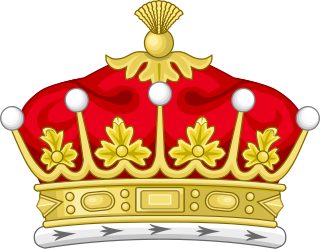 W
WEarl of Morley, of Morley in the County of Devon, is a title in the Peerage of the United Kingdom. It was created in 1815 for John Parker, 2nd Baron Boringdon. At the same time he was created Viscount Boringdon, of North Molton in the County of Devon, which is used as a courtesy title by the heir apparent to the earldom. It does not seem to have any connection with Baron Morley of Morley in Norfolk, held by another Parker family in the 16th century.
 W
WBaron Bowes is a title that has been created three times, once in the Peerage of Ireland and twice in the Peerage of the United Kingdom. The first creation came in the Peerage of Ireland on 15 August 1758 when John Bowes, Lord Chancellor of Ireland, was made Baron Bowes, of Clonlyon. The title became extinct on his death in 1767. The second creation came in the Peerage of the United Kingdom on 7 August 1815 when John Bowes, 10th Earl of Strathmore and Kinghorne, was made Baron Bowes, of Streatlam Castle in the County of Durham and of Lunedale in the County of York. The barony became extinct on his death in 1820 while the earldom was passed on to his younger brother, the eleventh Earl. The barony was revived on 1 July 1887 when the latter's grandson, Claude Bowes-Lyon, 13th Earl of Strathmore and Kinghorne, was made Baron Bowes, of Streatlam Castle in the County of Durham and of Lunedale in the County of York. See Earl of Strathmore and Kinghorne for further history of the title.
 W
WBaron Brownlow, of Belton in the County of Lincoln, is a title in the Peerage of Great Britain. It was created in 1776 for Sir Brownlow Cust, 4th Baronet. The Cust family descends from Richard Cust (1622-1700) of The Black Friars, Stamford, who represented Lincolnshire and Stamford in Parliament. In 1677 he was created a baronet, "of Stamford in the County of Lincoln". He was succeeded by his grandson Richard Cust, 2nd Baronet, who married Anne Brownlow, daughter of Sir William Brownlow, 4th Baronet, "of Humby", Lincolnshire, and sister and sole heiress of John Brownlow, 1st Viscount Tyrconnel, 5th Baronet of Belton House, Lincolnshire. The 2nd Baronet's son Sir John Cust, 3rd Baronet, sat as a Member of Parliament for Grantham and served as Speaker of the House of Commons from 1761 to 1770 and in 1754 inherited the Brownlow estates, including Belton, on the death of his childless maternal uncle Viscount Tyrconnel. His son Brownlow Cust, 4th Baronet represented Ilchester, Somerset, and Grantham in Parliament and in 1776 was raised to the peerage as Baron Brownlow, "of Belton in the County of Lincoln", chiefly in recognition of his father's services. He was succeeded by his son John Cust, 2nd Baron Brownlow who had sat as a Member of Parliament for Clitheroe, Lancashire, and also served as Lord Lieutenant of Lincolnshire for many years. In 1815 he was created Viscount Alford, "in the County of Lincoln" and Earl Brownlow both in the Peerage of the United Kingdom. In 1810 the future 1st Earl had married Sophia Hume, a daughter of Sir Abraham Hume, 2nd Baronet, of Wormleybury, by his wife Lady Amelia Egerton, a great-granddaughter of John Egerton, 3rd Earl of Bridgewater.
 W
WMarquess of Cholmondeley is a title in the Peerage of the United Kingdom. It was created in 1815 for George Cholmondeley, 4th Earl of Cholmondeley.
 W
WBaron Churchill, of Wychwood in the County of Oxford, is a title in the Peerage of the United Kingdom and held by a branch of the Spencer family. It was created in 1815 for Lord Francis Spencer, younger son of the 4th Duke of Marlborough. He had previously represented Oxfordshire in Parliament.
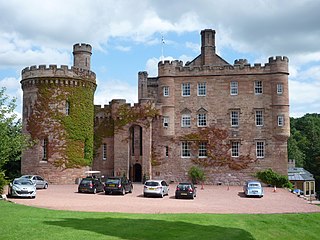 W
WEarl of Dalhousie, in the County of Midlothian, is a title in the Peerage of Scotland, held by the Chief of Clan Ramsay.
 W
WEarl Beauchamp was a title in the Peerage of the United Kingdom. It was created in 1815 for William Lygon, 1st Baron Beauchamp, along with the subsidiary title Viscount Elmley, in the County of Worcester. He had already been created Baron Beauchamp of Powyke in the County of Worcester, in 1806, also in the Peerage of the United Kingdom. Lord Beauchamp had previously represented Worcestershire in the House of Commons. He was succeeded by his eldest son, the second Earl. He also sat as Member of Parliament for Worcestershire. He never married and was succeeded by his younger brother, the third Earl. In 1813 he assumed by Royal licence the surname of Pyndar in lieu of Lygon. On his death in 1853 the titles passed to his younger brother, the fourth Earl. He was a General in the Army as well as a Member of Parliament.
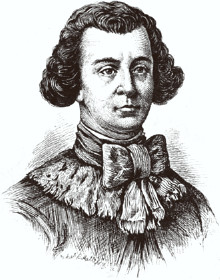 W
WEarl of Limerick is a title that has been created twice in the Peerage of Ireland, associated first with the Dongan family, then with the Pery family.
 W
WEarl Granville is a title that has been created twice, once in the Peerage of Great Britain and once in the Peerage of the United Kingdom. It is now held by members of the Leveson-Gower family.
 W
WEarl of Verulam is a title in the Peerage of the United Kingdom. It was created in 1815 for James Grimston, 4th Viscount Grimston. He was made Viscount Grimston at the same time. Verulam had previously represented St Albans in the House of Commons. In 1808 he had also succeeded his maternal cousin as tenth Lord Forrester. He was succeeded by his son, the second Earl.
 W
WEarl of Enniskillen is a title in the Peerage of Ireland. It was created in 1789 for William Cole, 1st Viscount Enniskillen. He had already been created Viscount Enniskillen in the Peerage of Ireland in 1776 and had inherited the title Baron Mount Florence, of Florence Court in the County of Fermanagh, which had been created in the Peerage of Ireland in 1760 for his father John Cole, who had earlier represented Enniskillen in the Irish House of Commons.
 W
WBaron Harris, of Seringapatam and Mysore in the East Indies and of Belmont in the County of Kent, is a title in the Peerage of the United Kingdom.
 W
WMarquess of Heusden is a high-ranking Dutch title of nobility retained by the Earl of Clancarty.
 W
WViscount Melbourne, of Kilmore in the County of Cavan, was a title in the Peerage of Ireland held by the Lamb family.
 W
WMarquess of Huntly is a title in the Peerage of Scotland created on 17 April 1599 for George Gordon, 6th Earl of Huntly. It is the oldest existing marquessate in Scotland, and the second-oldest in the British Isles, only the English marquessate of Winchester being older. The Marquess holds the following subsidiary titles: Lord Gordon of Strathaven and Glenlivet and Earl of Aboyne, and Baron Meldrum, of Morven in the County of Aberdeen
 W
WEarl of Morley, of Morley in the County of Devon, is a title in the Peerage of the United Kingdom. It was created in 1815 for John Parker, 2nd Baron Boringdon. At the same time he was created Viscount Boringdon, of North Molton in the County of Devon, which is used as a courtesy title by the heir apparent to the earldom. It does not seem to have any connection with Baron Morley of Morley in Norfolk, held by another Parker family in the 16th century.
 W
WMarquess of Cholmondeley is a title in the Peerage of the United Kingdom. It was created in 1815 for George Cholmondeley, 4th Earl of Cholmondeley.
 W
WEarl of Glasgow is a title in the Peerage of Scotland. It was created in 1703 for David Boyle, Lord Boyle.
 W
WEarl of St Germans, in the County of Cornwall, is a title in the Peerage of the United Kingdom held by the Eliot family that takes its name from the village of St Germans, Cornwall. It has the subsidiary title Baron Eliot. The family seat is Port Eliot.
 W
WEarl of Clancarty is a title that has been created twice in the Peerage of Ireland.
 W
WEarl of Verulam is a title in the Peerage of the United Kingdom. It was created in 1815 for James Grimston, 4th Viscount Grimston. He was made Viscount Grimston at the same time. Verulam had previously represented St Albans in the House of Commons. In 1808 he had also succeeded his maternal cousin as tenth Lord Forrester. He was succeeded by his son, the second Earl.
 W
WPrince of Waterloo is a title in the Dutch and Belgian nobility, held by the Duke of Wellington. The title was created by King William I of the Netherlands for Field Marshal Arthur Wellesley, 1st Duke of Wellington as a victory title in recognition of defeating Napoleon at the Battle of Waterloo in 1815. The Duke of Wellington and all his descendants along male line belong to Dutch and Belgian nobility, in which all the descendant dukes carry the title of "Prince of Waterloo" with the style "Serene Highness". The rest of his family retain the Dutch honorific Jonkheer or Jonkvrouw. Common law is that nobility and accompanying titles inherit along male line.
 W
WCharles Whitworth, 1st Earl Whitworth, GCB, PC, known as The Lord Whitworth between 1800 and 1813 and as The Viscount Whitworth between 1813 and 1815, was a British diplomat and politician.